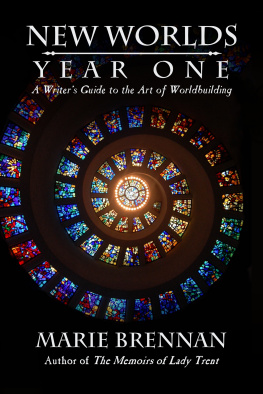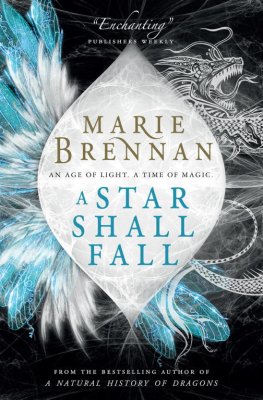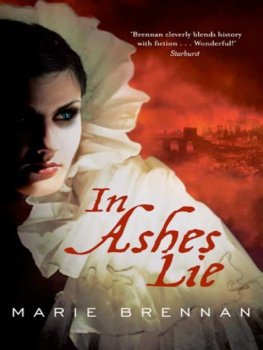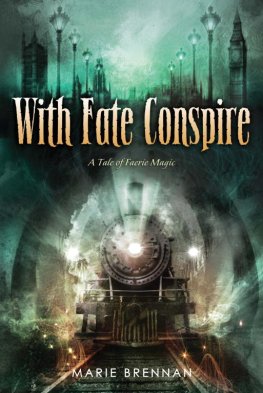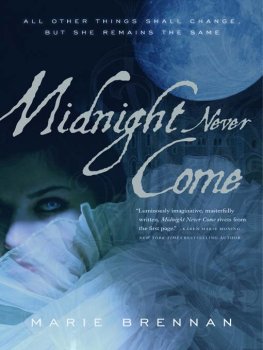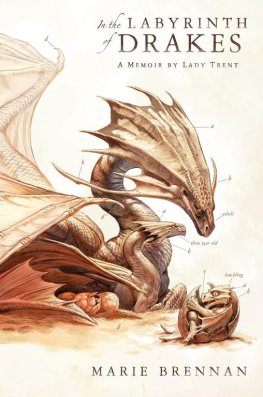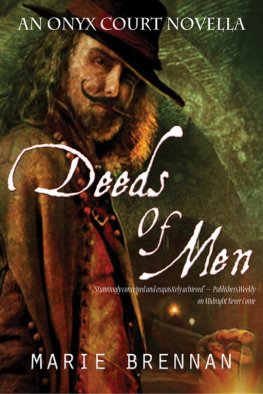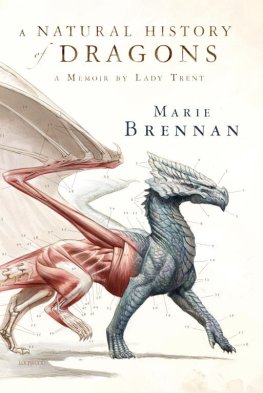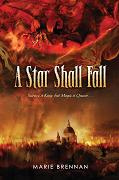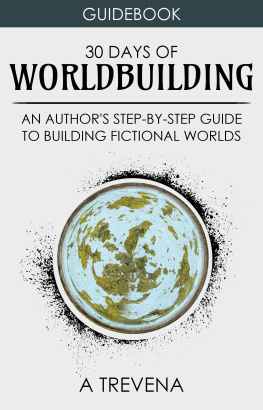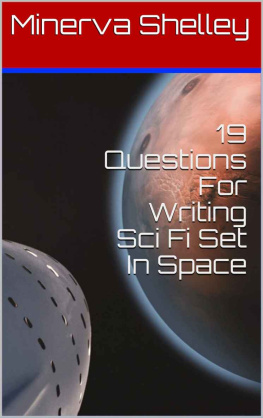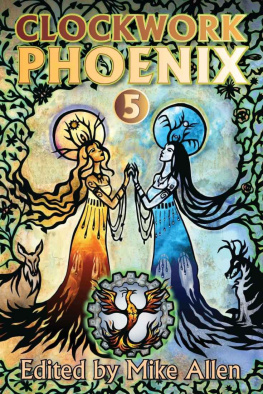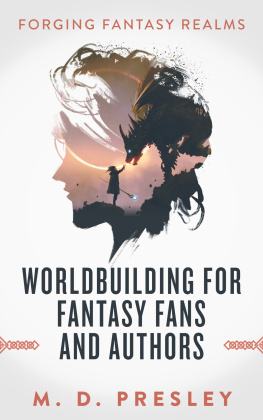New Worlds, Year One
A Writers Guide to the Art of Worldbuilding
Marie Brennan

Published by Book View Caf
www.bookviewcafe.com
ISBN: 978-1-61138-729-2
Copyright 2018 by Marie Brennan
All Rights Reserved, including the right to reproduce this book or portions thereof in any form.
Cover design by Pati Nagle
Introduction
Every time Ive thought about trying to write a book on science fiction and fantasy worldbuilding, Ive run aground on the sheer size of the topic.
When you stop to look at the world we live in, its fractally complex: a relatively simple-sounding facet of culture like marriage unpacks to the question of who gets married, and in what combinations, and why, and how, and how long does it last for, and how can it end, and what happens after it ends, and of course all those questions have multiple answers, because theyre handled differently in different societies at different times in history. Marriage among the pre-contact Lakota is not the same as marriage among nineteenth-century Italian Catholic peasants is not the same as marriage among Tang Dynasty Chinese aristocrats.
You can lose yourself forever on that single word, marriageand thats before you even get to all the concepts tied into it, like lineage and residence patterns and inheritance. The toe bones connected to the foot bone, the art bones connected to the religion bone, and so on until you have a body the size of an entire world. How can I discuss something that sprawling and huge?
Enter Patreon.
Without Patreon, this book would probably not exist. Because the only way to tackle a subject as complex as worldbuilding is piecemeal over a long period of timea format ideally suited to something like a blog series, but that requires a lot of time and effort. The subscription format Patreon offers made it possible for me to justify putting in the work necessary to do justice to the idea of worldbuilding. So if you have purchased this book, please take a moment to thank my patrons, and consider becoming one yourself!
~
With that out of the way: who am I, and why am I putting out a sixty-thousand-word book on worldbuilding that says Year One on the cover, implying there will be more to come?
Im a fantasy author, but the main reason Im doing this is that I am, or at least used to be, an anthropologist. My undergraduate degree is in archaeology and folklore; I finished graduate coursework in cultural anthropology and folklore before leaving school to write full-time. My whole life, my interest has been in history, foreign cultures, mythology, anything that introduces me to different ways of thinking and living. And because I never settled down to any one specific place or period to the exclusion of others, my head is packed full of everything from Classic Mayan civilization to the Japanese Sengoku period to Viking Age Scandinavia.
As you might expect, this spills over to my fiction. When people ask whether my story ideas start with a character or a plot, I usually say a world. Not in the sense that I have the whole setting in my mind, but rather in the sense that I cant separate the character or the plot from the world they live in: the protagonist is a certain kind of person because they live in a certain kind of society, or a conflict crops up because of something about how the culture works. My very favorite kinds of stories are the ones where those things are so intertwined that trying to transplant the story to another setting simply wouldnt work.
Digging into the chewy little details of a society can provide you with interesting new conflicts or fresh ways to approach old conflicts. In some cases this will become the centerpiece of your story; in others you merely slip it into the background, adding a bit of flavor that makes the reader feel youve transported them to another world.
Its true that every piece of fiction includes some worldbuilding, however minor; if it didnt, wed call it nonfiction. Writers of mainstream literary fiction make up towns. Or they set something in a real town but an imaginary neighborhood. Or the neighborhood is real, but the local coffee shop the protagonist frequents isnt. Even if I set a story in my hometown, on the street I grew up on, in the house I lived in for eighteen years, and put my protagonist in my old bedroom, Id still have to make decisions about whats in that room, and how it changes as the story goes along.
But the main focus of this book is on worlds far more different from our own: the secondary worlds of fantasy, the familiar-but-not timelines of alternate history, or the other planets of space-traveling science fiction. Even if youre writing urban fantasy or near-future science fiction, theres still the question of how the magic or the invented technology works, how it affects society, what cultural tics have built up around it (like slang or new superstitions), and so on. The more you diverge from current reality, the wider the scope of your potential changes getsuntil at the far end of the spectrum, pretty much everything is up for grabs.
And I do mean everything. If the world youre writing about is not our own in any time period or alternate track of history, then whos to say anything is the same? You might have adar and kimmet and renitin trees instead of oaks and maples and birches. Or maybe the closest analogue to our concept of tree is an ambulatory organism made of living crystal. In your invented world, the very ground the characters walk on might be a woven textile they have to maintain or theyll fall into an abyss. Maybe gravity changes direction based on the phase of the moon. Maybe electromagnetism doesnt work at all. OH MY GOD, WHERE DOES IT END?
It ends where you want it towhich for most of us is going to be long before we get to the point of throwing electromagnetism out the window. A portion of this book addresses the natural environment, but its focus is far more on the cultural end of things, the institutions and practices human beings have invented to organize themselves. I give a wide variety of examples where I can, especially trying to draw on sources that are less likely to be familiar to readers living in modern Western industrialized societiesbecause theres no reason speculative fiction should limit itself to such a narrow slice of possibility.
This book collects the first years worth of the New World Patreon, from March 2017 through February 2018. It is not, however, in original posting order: Ive rearranged them to flow more logically from one to the next, since youre likely to be reading them more rapidly than one essay per week. In rough terms, they go from the natural world, to food and its customs, to phonology and names, to etiquette, to folk magic, to stages of life, to kinship and marriage, to funerary practices, to money and wealth.
The final three pieces are a little different. One of the funding goals for the Patreon is a bonus theory essay in the months that have five Fridays (the basic setup being four posts a month). Instead of addressing specific cultural practices, these posts look at the ways writers approach worldbuilding, and various underpinning concepts you can use to add power to the settings you create.
The promise implicit in the titleNew Worlds, Year Oneis an accurate one. As of the publication of this book, the Patreon is still going strong. Right now there are fifty-eight items on my list of additional topics to cover, and I add new things faster than I write posts. There will be a Year Two for certain, and a Year Three is very likely. But for now, twelve months worth of posts is enough to start with. Enjoy your journey, and may it give you much inspiration for your own work!

